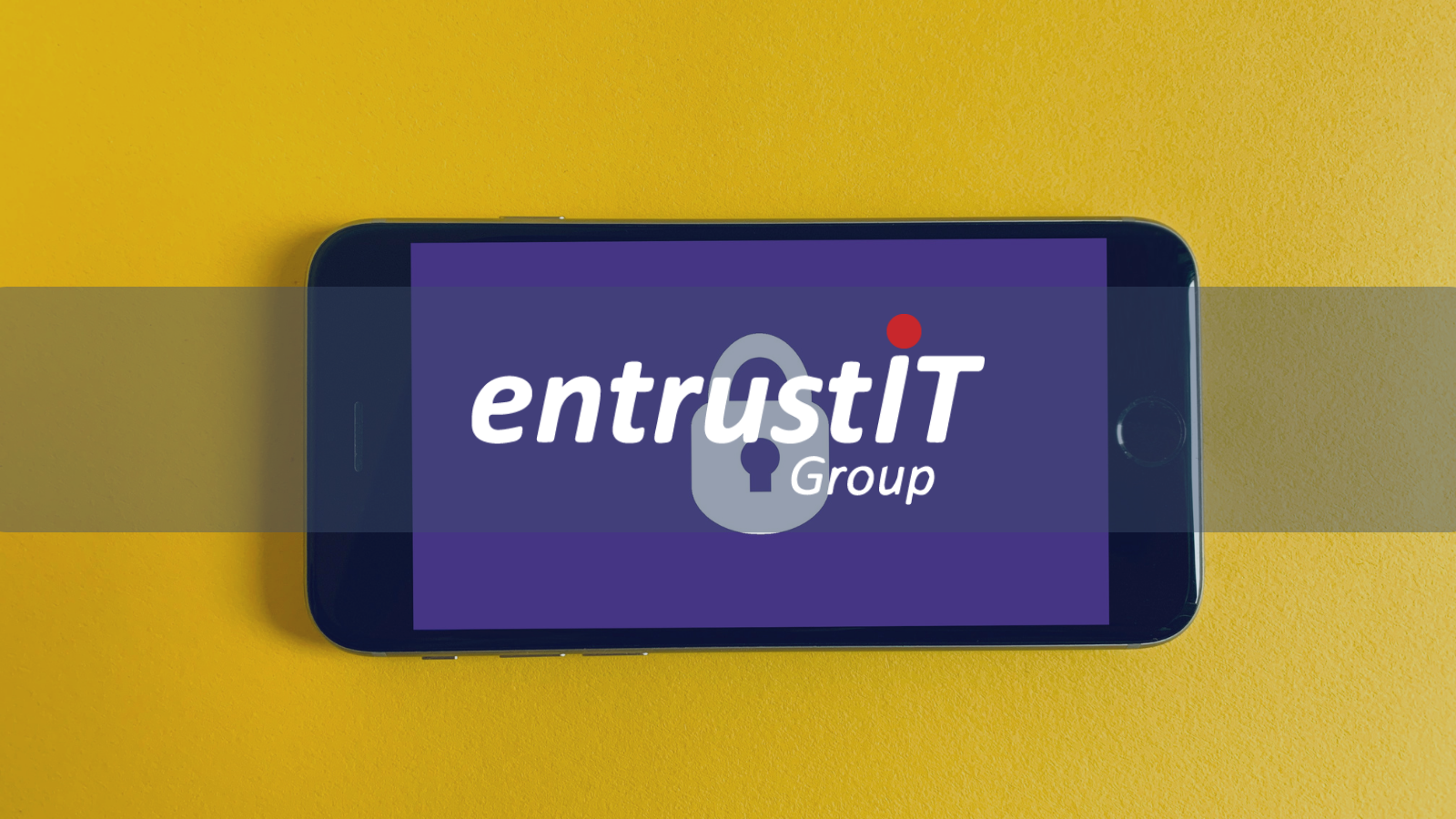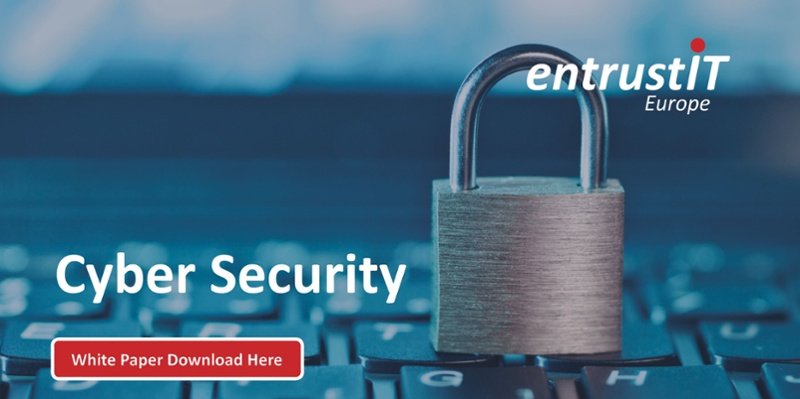
What is Zero Trust IT and is it the Future?

In today's digital landscape, protecting sensitive data and systems has become increasingly challenging. Cyber threats are growing more sophisticated, and traditional security approaches are proving inadequate. This is where zero-trust solutions come into play. Adopting a "never trust, always verify" approach is going to be the way forward. Zero trust challenges the traditional notion of implicit trust within a network. It focuses on stringent access controls, continuous verification, and contextual factors to ensure secure interactions.
According to Gartner, by 2023, 60% of enterprises will phase out traditional VPNs in favour of zero trust network access (ZTNA). In this blog, we will delve into what zero trust is, examine its rising popularity, highlight its core principles, and explore the benefits it brings to businesses in the face of evolving cyber threats.
What is Zero Trust IT
Zero trust is a security concept that challenges the conventional notion of trusting entities within a network by default. Instead, it adopts a "never trust, always verify" approach. Under a zero-trust model, all users, devices, and applications must prove their authenticity and meet defined security requirements before being granted access to resources. Trust is not attributed based on user location, network boundaries, or assumed privileges. Instead, zero trust focuses on context-based factors, such as user identity, device health, location, time, and behaviour, to determine access privileges.
How to Can you Migrate to a Zero Trust solution
The rise of sophisticated cyber threats, such as advanced persistent threats (APTs), ransomware attacks, and data breaches, has necessitated a shift towards more robust security measures. Traditional perimeter-based defences, like firewalls and VPNs, are no longer sufficient to protect against these threats. Additionally, the increasing adoption of cloud services, mobile devices, and remote work arrangements has expanded the attack surface, making traditional security models less effective.
Enter zero trust. This approach has gained significant traction because it aligns with the evolving nature of modern IT environments. By adopting zero-trust solutions, organizations can enhance their security posture by focusing on identity-based access controls, continuous monitoring, and risk-based assessments.
What are The Benefits of Using Zero Trust
Adopting a zero-trust approach offers numerous advantages for businesses in today's threat landscape. Enhanced security, protection of sensitive data, compliance with regulations, improved user experience, and simplified IT management are among the key benefits that organizations can reap by implementing zero-trust solutions.
Enhanced Security: Zero trust mitigates the risk of unauthorized access and lateral movement within networks, significantly reducing the likelihood of successful cyberattacks.
Data Protection: By employing granular access controls and encryption, zero-trust solutions safeguard sensitive data from unauthorized disclosure or exfiltration.
Compliance and Regulations: Zero trust aligns with various industry regulations and compliance frameworks, such as the General Data Protection Regulation (GDPR) and Payment Card Industry Data Security Standard (PCI DSS), helping organizations meet their legal obligations.
Improved User Experience: Zero trust solutions enable secure access to resources from any location and device, fostering flexibility and productivity for remote workers.
Simplified IT Management: With zero trust, organizations can adopt a unified and centralized approach to manage access policies and user identities, reducing complexity and administrative overhead.

What Can Zero Trust Look Like
Implementing a zero-trust approach involves a range of strategies and technologies to ensure comprehensive security. From identity and access management to micro-segmentation and continuous monitoring, let's explore some key elements that can shape the implementation of a robust zero-trust framework for your organization.
Enhanced Security: Zero trust mitigates the risk of unauthorized access and lateral movement within networks, significantly reducing the likelihood of successful cyberattacks.
Data Protection: By employing granular access controls and encryption, zero-trust solutions safeguard sensitive data from unauthorized disclosure or exfiltration.
Compliance and Regulations: Zero trust aligns with various industry regulations and compliance frameworks, such as the General Data Protection Regulation (GDPR) and Payment Card Industry Data Security Standard (PCI DSS), helping organizations meet their legal obligations.
Improved User Experience: Zero trust solutions enable secure access to resources from any location and device, fostering flexibility and productivity for remote workers.
Simplified IT Management: With zero trust, organizations can adopt a unified and centralized approach to manage access policies and user identities, reducing complexity and administrative overhead.
Zero Trust: Guaranteed Security For Your Business
In an increasingly complex and threat-filled digital landscape, zero-trust solutions have emerged as a powerful approach to bolstering cybersecurity. By adopting a "never trust, always verify" mindset, businesses can enhance their security posture, protect sensitive data, and ensure compliance with industry regulations. Implementing zero-trust solutions offers benefits such as enhanced security, data protection, improved user experience, and simplified IT management.
As a managed service provider, we understand the importance of zero trust in safeguarding your business. Our expertise in deploying and managing zero-trust solutions can help you establish a robust security framework. If you want to learn more please do not hesitate to get in contact on 0330 002 0045 or email enquiries@entrustit.co.uk.
Subscribe here!
Recent Posts
Posts by tag
- technology (128)
- Security (111)
- IT Security (98)
- cyber security (98)
- modern technology (70)
- Managed Service (69)
- Microsoft 365 (68)
- Cloud (66)
- IT support (66)
- business (63)
- cloud computing (60)
- cyber attack (60)
- cloud it (56)
- cybersecurity (56)
- microsoft (55)
- workplace (55)
- Microsoft Teams (53)
- Working from home (51)
- productivity (49)
- IT (47)
- office (46)
- office 365 (45)
- Password Security (43)
- entrustit (41)
- employees (39)
- Uncategorised (38)
- flexible work (37)
- Cyber (35)
- Remote (33)
- efficiency (31)
- Hosted Workspace (30)
- hosted desktop (30)
- it support bournemouth (30)
- schools (29)
- cyber privacy (28)
- email security (28)
- independent schools (28)
- it support dorset (27)
- school ict (27)
- collaboration (26)
- 2023 (25)
- computing (25)
- it support hampshire (25)
- public cloud (24)
- it consultancy (22)
- IT audit (20)
- entrust (20)
- it consultancy bournemouth (20)
- it support southampton (20)
- password (20)
- it consultancy dorset (19)
- it consultancy hampshire (19)
- msp (19)
- passwords (19)
- ransomware (19)
- hosted applications (18)
- it support winchester (18)
- VoIP (17)
- cloud cctv (17)
- cloud voip (17)
- covid19 (17)
- hacking (17)
- it consultancy southampton (17)
- private cloud (17)
- data (16)
- teamwork (16)
- Coronavirus (15)
- IT costs (15)
- cctv (15)
- office 365 support (15)
- GDPR (14)
- hackers (14)
- internet (14)
- network (14)
- Protection (13)
- covid-19 (13)
- hack (13)
- internet safety (13)
- management (13)
- Hosted Desktop and Applications (12)
- Windows Virtual Desktop (12)
- hardware (12)
- hybrid cloud (12)
- windows 10 (12)
- 2020 (11)
- 2022 (11)
- Microsoft Planner (11)
- artificial intelligence (11)
- awards (11)
- data breach (11)
- phishing (11)
- vulnerabilities (11)
- AI (10)
- Hampshire (10)
- IT Director (10)
- digital (10)
- uk (10)
- windows (10)
- Backup (9)
- attack (9)
- bitwarden (9)
- planning (9)
- software (9)
- telephony (9)
- usecure (9)
- communication (8)
- desk phone (8)
- education (8)
- eu (8)
- outsource (8)
- partnership (8)
- staff (8)
- Bournemouth (7)
- Dorset (7)
- Google (7)
- OneDrive (7)
- award winning (7)
- cloud storage (7)
- infrastructure (7)
- mobile (7)
- offsite backup (7)
- 2019 (6)
- AI CCTV (6)
- Access Management (6)
- Apple (6)
- ISO (6)
- News (6)
- Skype for Business (6)
- apps (6)
- architect (6)
- child protection (6)
- european union (6)
- hacks (6)
- internet of things (6)
- iot (6)
- legal (6)
- legal it (6)
- mobile phones (6)
- onsite backup (6)
- password manager (6)
- remote desktop service (6)
- resources (6)
- virus (6)
- 3d design desktop (5)
- Azure (5)
- Case Studies (5)
- Cyber Essentials (5)
- Cyber Essentials Plus (5)
- Desktop (5)
- Microsoft Copilot (5)
- Multi-Site Business (5)
- Risk assessment (5)
- Thames Valley Tech & Innovation Awards (5)
- The Business Magazine (5)
- Windows 7 (5)
- award (5)
- brexit (5)
- designer (5)
- ios (5)
- personal data (5)
- smartphone (5)
- sophos (5)
- surrey (5)
- united kingdom (5)
- website (5)
- Attacks (4)
- BYOD (4)
- ChatGPT (4)
- DR (4)
- DR planning (4)
- Facebook (4)
- Government (4)
- IP (4)
- MDR (4)
- Microsoft Forms (4)
- SharePoint (4)
- VPN (4)
- WannaCry (4)
- computer performance (4)
- ddos (4)
- digital transformation (4)
- disaster recovery (4)
- law (4)
- legacy (4)
- modern work (4)
- proactive (4)
- remote learning (4)
- sme (4)
- wireless internet bournemouth (4)
- wireless internet southampton (4)
- 2021 (3)
- 2024 (3)
- 5G (3)
- Dorset Chamber (3)
- EDR (3)
- Fourth Industrial Revolution (3)
- General (3)
- Google Drive (3)
- Hampshire Chamber (3)
- Help (3)
- High Growth (3)
- Local (3)
- NHS (3)
- New Forest (3)
- South Coast Tech & Innovation Awards (3)
- Tech Company of the Year (3)
- Tech Growth (3)
- Thames Valley (3)
- Tiva (3)
- Zoom (3)
- acquisition (3)
- big switch off (3)
- budgets (3)
- citrix (3)
- closed cloud (3)
- copilot (3)
- copilot pro (3)
- digital hub (3)
- guide (3)
- innovation (3)
- instagram (3)
- intelligence (3)
- london (3)
- meetings (3)
- online meetings (3)
- smart buildings (3)
- storage (3)
- strategy (3)
- teaching (3)
- trump (3)
- twitter (3)
- windows 11 (3)
- 2016 (2)
- 2018 (2)
- BGL Company (2)
- Bourne Group (2)
- Burhill (2)
- Burhill Group (2)
- CAD (2)
- Environment (2)
- Firewall (2)
- GPT-4 (2)
- Gen Z (2)
- Hampshire Business Awards (2)
- ISBA (2)
- Macs (2)
- Managed Service Provider of the Year (2)
- Microsoft Autopilot (2)
- Mr Mulligans (2)
- PaaS (2)
- Privacy Shield (2)
- Sydenhams (2)
- Wifi (2)
- XDR (2)
- afc bournemouth (2)
- afcb (2)
- android (2)
- b2b (2)
- bcs (2)
- berkshire (2)
- blockchain (2)
- broadband (2)
- camcloud (2)
- cryptocurrency (2)
- dark web (2)
- downtime (2)
- dropbox (2)
- eagle eye networks (2)
- east grinstead (2)
- exhibition (2)
- farnham (2)
- finalist (2)
- legalex (2)
- machine learning (2)
- macos (2)
- organisation (2)
- paypal (2)
- predictions (2)
- president (2)
- reading (2)
- serval systems (2)
- smart sensors (2)
- solent (2)
- us (2)
- utility management (2)
- video conferencing tools (2)
- zero-trust (2)
- 1998 (1)
- 2026 (1)
- AMD (1)
- ARM (1)
- Abbey Hill (1)
- Aldwickbury Park (1)
- BBC (1)
- BUNKERS! (1)
- Bedford (1)
- Bedfordshire (1)
- Birchwood Park (1)
- Burnout (1)
- CEO (1)
- Central South Business Awards (1)
- Cloud VMS (1)
- Cloudtango (1)
- East Midlands (1)
- Endpoint 100 (1)
- Go Integrator (1)
- Growth 100 (1)
- Harvey Jones Kitchens (1)
- Hoebridge (1)
- Hospitality (1)
- Ignite 2018 (1)
- Ignite 2020 (1)
- Insider (1)
- Intune (1)
- LLM (1)
- Leaders (1)
- Loop (1)
- M&A (1)
- MFA (1)
- MPLS (1)
- MSP Select 2024 (1)
- Market (1)
- May (1)
- Multi Factor Authentication (1)
- MyAnalytics (1)
- Ninja Warrior UK (1)
- PBX (1)
- PM (1)
- Power BI (1)
- Ramsdale Park (1)
- Redbourn (1)
- Regulation (1)
- Reid Steel (1)
- SD-WAN (1)
- Surrey Business Awards (1)
- Thornbury (1)
- WCry (1)
- WannaCrypt (1)
- Wycombe Heights (1)
- ashley madison (1)
- bandwidth (1)
- battersea (1)
- beach (1)
- big data (1)
- black friday (1)
- bloatware (1)
- brand (1)
- builders merchant (1)
- business growth (1)
- business process audit (1)
- cambridge analytica (1)
- canada (1)
- cia (1)
- clinton (1)
- cnn (1)
- co op (1)
- compliance (1)
- connectivity (1)
- copyright (1)
- crime (1)
- cyber monday (1)
- dean drako (1)
- defence (1)
- dkim (1)
- dmarc (1)
- dns (1)
- donald (1)
- dyn (1)
- election (1)
- enterprise (1)
- epos (1)
- equality (1)
- executive order (1)
- facial recognition (1)
- fax (1)
- football (1)
- gchq (1)
- grinstead (1)
- intel (1)
- intercept x (1)
- josh widdicombe (1)
- knights of old (1)
- landmarks (1)
- learning (1)
- legal technology forum (1)
- leisure (1)
- meltdown (1)
- millennials (1)
- mimecast (1)
- mirai (1)
- no-deal (1)
- number plate detection (1)
- onsite (1)
- outsourcing (1)
- paper (1)
- patisserie valerie (1)
- performance reviews (1)
- pound (1)
- premier league (1)
- private equity (1)
- procrastination (1)
- recruitment (1)
- research (1)
- retail (1)
- roundtable (1)
- samsic (1)
- sharefile (1)
- smishing (1)
- snowden (1)
- solent business awards (1)
- solentBA (1)
- spectre (1)
- spf (1)
- sterling (1)
- storm (1)
- talktalk (1)
- trumppresident (1)
- ukitawards (1)
- united states (1)
- usa (1)
- vault 7 (1)
- vitality stadium (1)
- whatsapp (1)
- white (1)
- white house (1)
- wikileaks (1)
- women in business (1)
- xiongmai (1)
- year (1)
- zero touch deployment (1)


